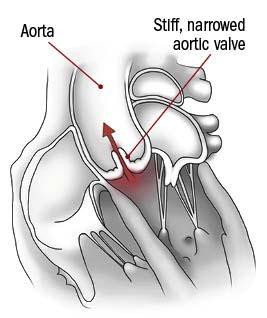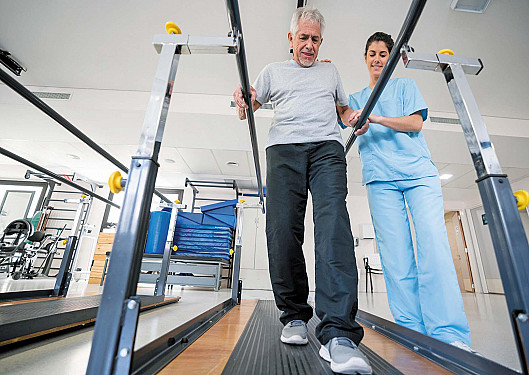Can you slow down stenosis of the aortic valve?
Ask the doctor
 I’m 80 years old and recently had an echocardiogram that showed mild aortic stenosis (my mean pressure gradient value is 13). I walk and swim regularly without any issues. Is there anything I can do to slow down the deterioration of my aortic valve? Are there any medications that can improve its function?
I’m 80 years old and recently had an echocardiogram that showed mild aortic stenosis (my mean pressure gradient value is 13). I walk and swim regularly without any issues. Is there anything I can do to slow down the deterioration of my aortic valve? Are there any medications that can improve its function?The aortic valve sits between the left ventricle (the heart’s main pumping chamber and the aorta (the body’s main artery; see illustration). When the valve narrows, the average pressure in the left ventricle is higher compared with the aorta. You have mild stenosis, which is defined as a mean pressure gradient of 20 or lower. If a person’s mean pressure value gets to 50 or 60, however, that puts a great deal of strain on the left ventricle and limits how much blood gets through the valve to the body. When that happens, the valve needs to be replaced.
To continue reading this article, you must log in.
Subscribe to Harvard Health Online Plus (HHO+) to unlock expert-backed health insights, personalized tools, and exclusive resources to feel your best every day.
Here’s what you get with your HHO+ membership:
- Unlimited access to all Harvard Health Online content
- 4 expertly curated newsletters delivered monthly
- Customized website experience aligned to your health goals
- In-depth health guides on topics like sleep, exercise, and more
- Interactive features like videos and quizzes
- Members-only access to exclusive articles and resources
I’d like to subscribe to HHO+ for $4.99/month to access expert-backed content to help make smart, informed decisions about my well-being.
Sign Me UpAlready a member? Login ».
About the Author

Christopher P. Cannon, MD, Editor in Chief, Harvard Heart Letter; Editorial Advisory Board Member, Harvard Health Publishing
Disclaimer:
As a service to our readers, Harvard Health Publishing provides access to our library of archived content. Please note the date of last review or update on all articles.
No content on this site, regardless of date, should ever be used as a substitute for direct medical advice from your doctor or other qualified clinician.
















